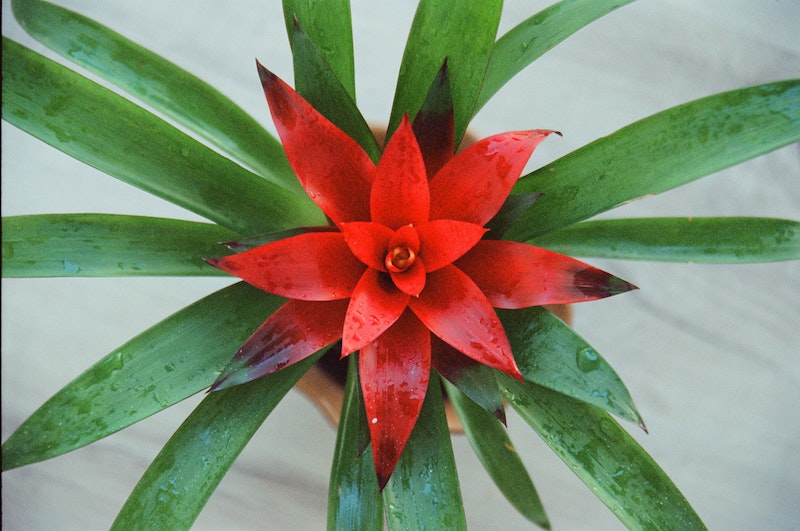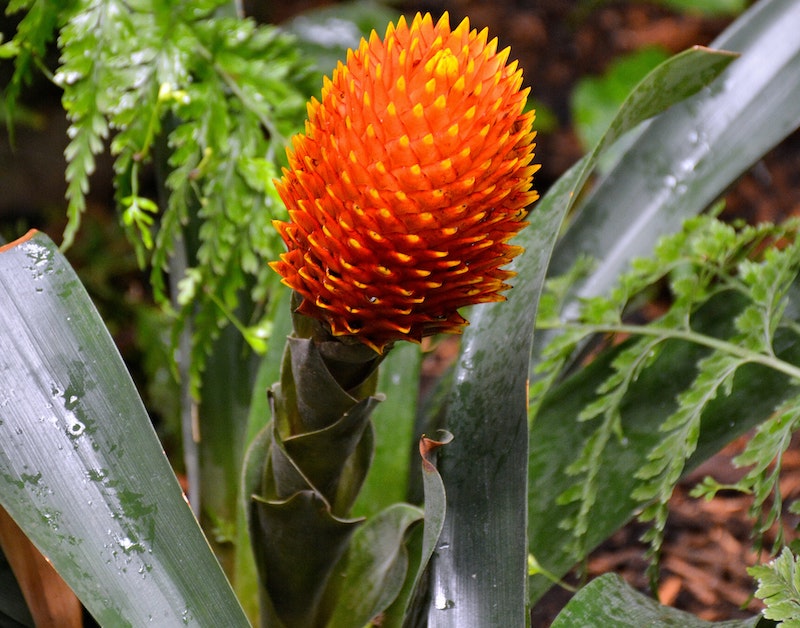Bromeliads are native to Central and South America and love the humidity of the tropics. In their natural habitat, they collect rainwater in a central cup or “tank”. Bromeliads are also able to absorb nutrients and moisture from the air, giving them the nickname "air plants”. Many of these plants need little to no soil, and prefer to be more dry than wet. In the wild, bromeliads often live on other plants and trees. We can replicate this warm, humid environment at home in a few different ways.

How To Tell If Bromeliads Needs Water
Bromeliads are native to the tropical Americas but have been found in other warm humid locations around the world. For example, Spanish moss found in southern states like Louisiana is a type of bromeliad. These plants are able to collect nutrients and moisture from the air as they rest on tree branches. In this environment, they only receive rainwater and moisture from the air. In our homes, we can mimic this environment by misting the plants regularly with fresh water, or by using humidity trays. Try keeping your bromeliad in a kitchen or bathroom window since these locations tend to be more humid.
Some species of bromeliad have a central rosette of leaves forming a little cup. Make sure there’s always fresh water in that cup. Other species like the Tillandsia Xerographica can be fully submerged and soaked in filtered water twice a month for an hour, and thrive just sitting on a sunny shelf. A good rule of thumb is to always check the soil moisture prior to watering your plants. Bromeliads prefer their potting medium to dry a bit before watering, although the central cup of your bromeliad (if it has one) should remain moist. If your bromeliad seems to be getting crispy edges, it is in need of more water. Increase the frequency of watering, or increase the amount of water that it receives. You can also try boosting humidity for your bromeliad by setting the plant on a humidity tray, or a tray with pebbles and a little water.

Overwatering and hard water are other issues that can harm bromeliads. If the foliage is more yellow and soft, the plant is likely overwatered. You might be able to repot it in fresh dry potting media to save it. Hold off on watering the soil again for a few days to see if it recovers. If it is browning and doesn’t seem to be thriving, it could be reacting to minerals and salts in your water. Switch to filtered, distilled, or rain water.
How To Water Bromeliads
Most tap water is fine for growing bromeliads but avoid using any salty or alkaline water. If you plan to use tap water in the central cup, make sure to refresh the water in the cup on a regular basis. Refreshing the pool of water will help prevent mineral buildup and rotting. These plants really dislike being overwatered. Generally, you should water the soil every 1-2 weeks during the growing season, then cut back on watering during months of dormancy to every 2-3 weeks. During the winter move any plants away from vents since the warm air may dry them out.
Many bromeliads have a cup formed by their central leaves. Keep fresh rainwater or distilled water in the cup. You should pour out the old water and fill it with clean water every few days. This will help to prevent bacterial growth and mineral buildup. Ideally the water you provide for your bromeliad should have a pH between 4.0-7.0. Smaller bromeliads are especially sensitive to salt and mineral buildup.
Bromeliad Watering Tips
- Water every 1-2 weeks during the growing season (spring through summer)
- Water every 2-3 weeks during dormancy (fall and winter)
- Use filtered water, distilled water, or rainwater
- Allow soil to dry between waterings but keep the “cup” full
- Provide plenty of humidity
 |
Author Chris Link - Published 6-23-2023 |
